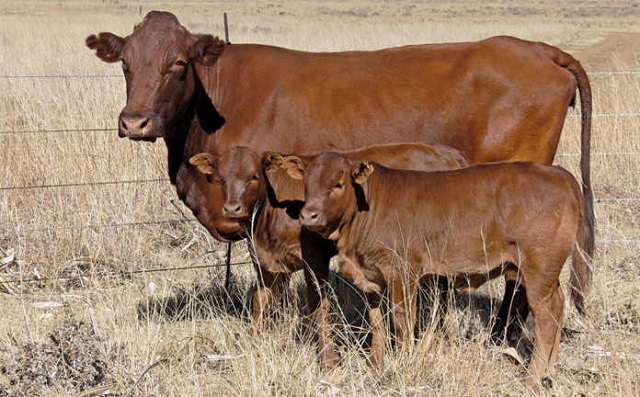
The Sunday News

Mhlupheki Dube
ONE frequent question that I get from smallholder livestock farmers is on management of the calving interval. Farmers ask me how they can ensure that they get a calf every year from the cow.
A calf every year obviously results in organic growth of the herd and that inevitably translates into dollars and cents for the farmer. Managing a cow such that it can give you a calf every year or at least such that it reduces the calving interval considers a number of factors which fall under the postpartum management regime.
One important aspect in postpartum management of a cow is ensuring that the cow’s system is primed early enough for it to return to cyclicity. One key determinant for a cow to return to cycling is its nutrition status.
This is the status pre and post-calving period. Nutrition status of the cow during the last 60 days before calving will have a huge impact on its cycling behaviour after calving.
A cow which is on a rising nutritional plane and has a body condition score which is around three on a one to five scale will return much faster into cycling than the one which is on a declining plane of nutrition.
A quicker return to cycling means the cow will clean and prime its reproductive system and be ready for reproduction in a relatively shorter period than the one that delays to return to cycling.
Another factor which determines how soon a cow cycles after calving is the difficulty in calving. Cows which experience calving difficulties generally tend to delay resuming cycling while those that calve easy tend to cycle much earlier. This means that as a farmer if you observe your cows carefully you might find that those cows which are prone to difficult calving tend to have extended calving intervals meaning the difference between one calf and the other is usually longer up to three years.
Also the suckling stimulus from the calf has a negative effect on cyclic activity during the postpartum period. The negative suckling stimulus tends to suppress cycling in cows, howeve, animals on a positive energy balance and in adequate body condition generally overcome this negative stimulus.
Another factor which influences cyclicity is uterine involution. This is the time that is required to repair the reproductive tract and make it suitable to carry another pregnancy. The longer it takes to repair the reproductive system especially the uterine muscles the longer it takes for a cow to resume cycling while factors such as body condition, level of nutrition, age of cows, milk production, disease, parasites will affect the ability to shorten the postpartum interval.
Improving nutrition is probably the easiest way to shorten the postpartum period. Nutritional demands increase greatly in late gestation and even more in early lactation hence the need for the cows to be on a rising plane of nutrition during this period.
An animal shares its nutrients to various functions within its body and reproduction is of very low priority when nutrient partitioning is considered.
This is why cows in thin body condition often don’t rebreed. Research has also established that body condition is correlated to several reproductive events such as calving interval, milk production, weaning weight, calving difficulty and calf survival.
It follows that a cow whose nutritional status was properly managed pre and post-calving period, will likely to calve easily, produce adequate milk and wean heavier calves. Admittedly there are other factors that contribute to the same outcomes.
Another important factor in managing the postpartum interval is the presence of a working bull within your herd. Cows that are exposed to a bull manage high pregnancy rates than those that are not adequately exposed to a bull.
While this sounds simple and straight forward it doesn’t seem to sink within many smallholder farmers. There are very few bulls in communal herds such that it is very common to find a farmer with a sixty herd of cattle but with no bull. If only farmers could appreciate the basic principle that your bull is half of your herd they would probably find it imperative to keep a bull every time in their herds.
Uyabonga umntakaMaKhumalo.
Feedback [email protected] or cell 0772851275.



